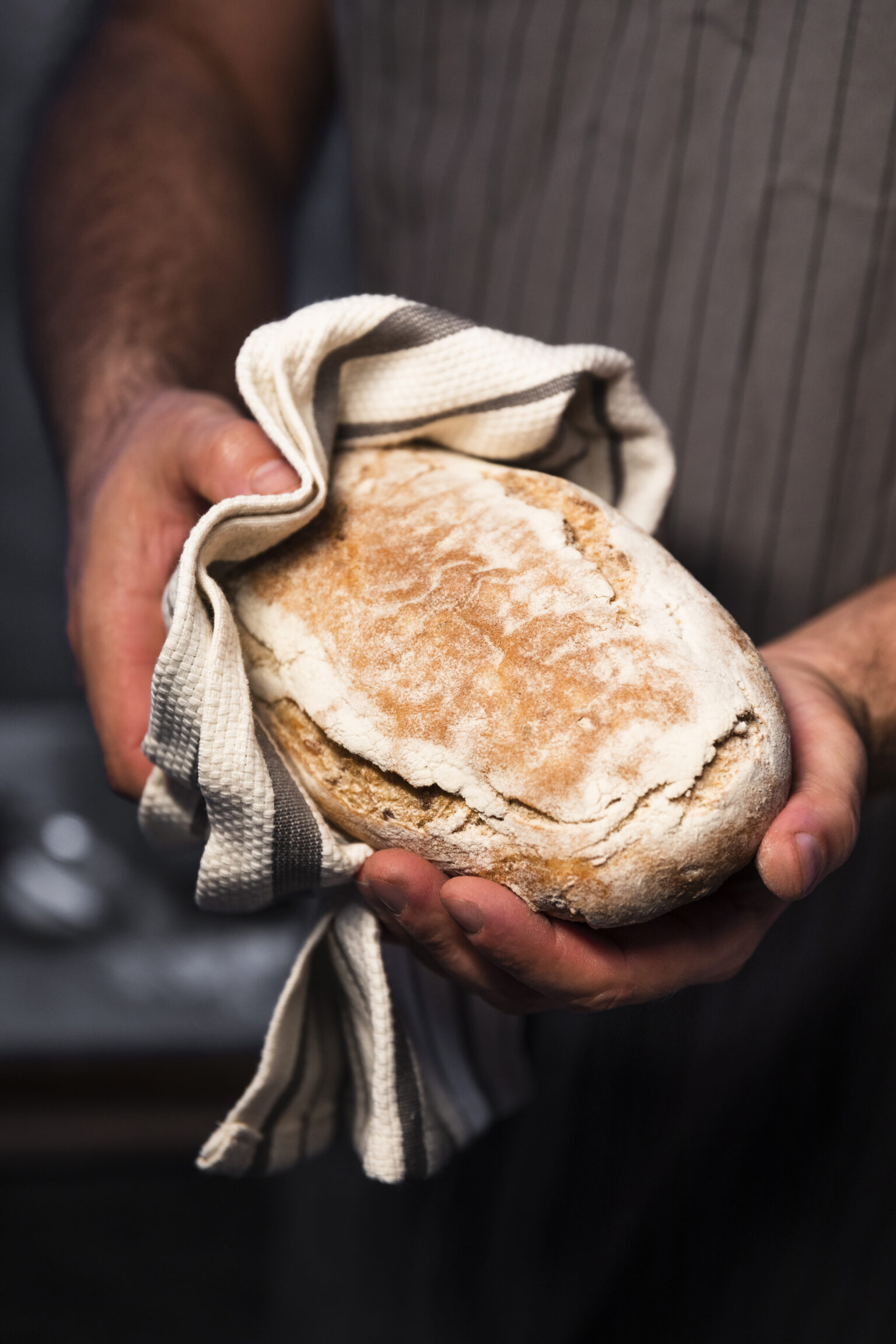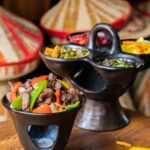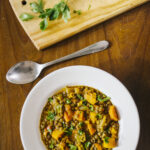Traditional Ethiopian injera is a staple bread that holds a significant place in African cuisine, particularly in Ethiopian and Eritrean cultures. Injera is a type of sourdough flatbread made from teff flour, a small and ancient grain native to the region. It is a versatile and essential component of Ethiopian meals, serving as both a utensil and a delicious accompaniment to various dishes.
The process of making injera involves fermenting teff flour batter for a period of time, which gives the bread its distinct tangy flavor and spongy texture. Teff flour, known for its high nutritional value, contributes to the uniqueness of injera. The batter is traditionally prepared by mixing teff flour with water and allowing it to ferment naturally for several days. The fermentation process creates bubbles within the batter, resulting in the characteristic porous texture of the bread.
To cook injera, a large circular griddle called a mitad or mogogo is used. The batter is poured onto the hot griddle, starting from the center and spreading outward in a circular motion. The injera cooks on one side only, without flipping it. As the batter heats up, it forms bubbles on the surface, and once cooked, the injera is removed from the griddle and stacked.
In Ethiopian cuisine, injera serves as the foundation for meals and is typically served alongside a variety of stews, curries, and vegetables. The injera acts as a plate and utensil, with diners tearing off pieces and using them to scoop up the other dishes. This communal style of eating, where everyone shares from the same platter, is a significant aspect of Ethiopian dining culture.
Injera has a slightly sour and tangy taste, which complements the spiciness and richness of Ethiopian dishes. It has a soft and spongy texture that soaks up the flavors of the accompanying foods, making it a perfect vessel for savoring the various stews and sauces. In addition to its culinary appeal, injera is gluten-free and rich in iron, fiber, and protein, making it a nutritious and wholesome food choice.
Beyond its role as a mainstay in Ethiopian cuisine, injera has gained popularity worldwide. Ethiopian restaurants and food enthusiasts globally appreciate the distinct flavors and cultural significance of this bread. It is also embraced by those following gluten-free diets due to its teff-based composition.
Injera represents the rich culinary heritage of Ethiopia and Eritrea. Its distinct flavor, unique preparation process, and versatile usage contribute to its reputation as a beloved and essential component of African cuisine. Whether enjoyed in traditional Ethiopian restaurants or prepared at home, injera provides a memorable and flavorful experience that truly embodies the spirit of African gastronomy.








